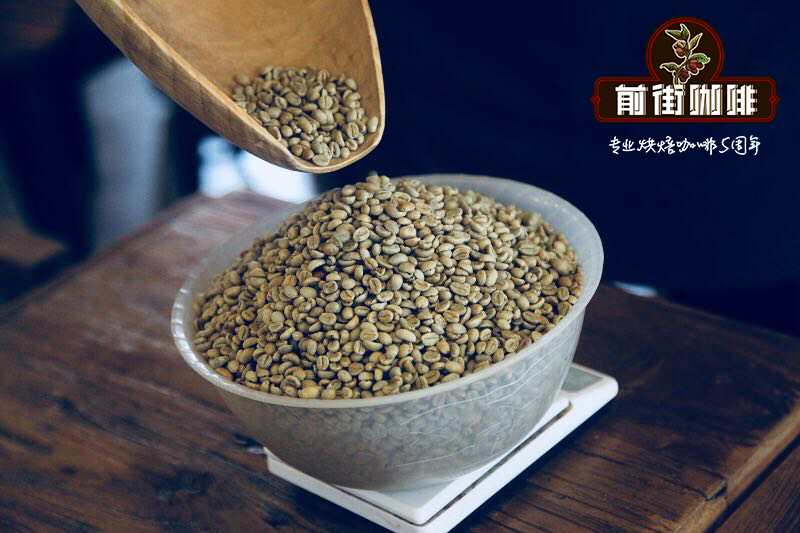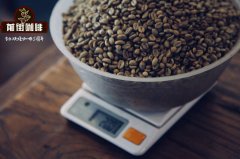The balance of bitterness and sourness in coffee roasting varies with the depth of roasting
The balance between bitter taste and sour taste of coffee roasted varies with the depth of roasting.

Know the characteristics of baking and find your favorite coffee.
It is generally believed that raw beans determine 80% of the taste of coffee, while the remaining 20% are determined by roasting.
The most important thing is the degree of baking. Beans overroasting coffee will only highlight the bitter taste; under-roasting will make it too sour. According to the characteristics of beans, it is important to know the best time to stop baking. After knowing the ideal baking degree of each kind of beans, it is also helpful to buy baked beans. If the store will change the baking degree according to different kinds of beans, you should be able to buy delicious coffee beans from there.
People who are not used to coffee tend to think that shallow roasted beans are more delicious. It is recommended to start with the shallow baked beans suitable for entry, and then slowly try the beans with a deeper baking degree.
Shallow baking
It has a sour taste and gives off the original rich aroma of beans.
The coffee with shallow roasted beans is less bitter and sour, which is similar to the taste of black tea. When you want to brew coffee with a refreshing flavor, or when you want to taste coffee with a soft flavor, it is suitable to take shallow roasting.
Medium baking
Suitable for beans with less bitter and sour taste and mild taste
Medium roasting is the stage that can show the bitterness and taste of coffee, which is suitable for beans with strong aroma and mild taste. When testing the taste of Guan coffee, it is also based on medium roasting.
When roasting boutique coffee, in order to clearly show the individual aroma of coffee, light to medium roasting is mostly adopted. However, when you want to show the taste of coffee, there are many beans that are suitable for roasting above medium and deep roasting.
Medium and deep baking
Being able to fully feel the bitter and sour taste is the taste preferred by the Japanese.
The coffee baked in medium and deep depth tastes the most, neither bitter nor sour. In addition to the Japanese, it is the baking degree that people all over the world like. Suitable for beans with slightly thicker meat.
Deep baking
Bitter taste, aroma of chocolate and caramel
Deep baking is when beans are baked dark brown or black. The bitterness of the coffee becomes the most obvious and the flavor is slightly monotonous. It is suitable for roasting thick, sour beans, or when brewing espresso.
The temperature of hot water and the thickness of powder will affect the bitter and sour taste.
The delicate balance between bitter and sour coffee is not controlled by roasting alone. The balance will be changed due to the differences in the thickness of the beans, the hot water temperature and the extraction speed during extraction. At each stage, it takes time to cook the flavor you like.
1 hot water temperature
If the temperature of the hot water is too low to fully extract the ingredients of the coffee, it will only brew the sour coffee; on the contrary, if the temperature of the hot water is too high, the bitter and miscellaneous taste of the coffee will become heavier.
2 the thickness of powder (Mesh)
If the coffee beans are ground into a thicker powder, the concentration of the coffee is lighter and the sour taste is better than the bitter taste. If the powder is ground finer, the concentration of the coffee brewed is thicker and the bitterness is more prominent.
3 extraction rate
The speed of extraction is fast, and the sour taste of coffee is heavier and lighter. On the contrary, slowly inject hot water to prolong the steaming time of coffee powder, and the coffee is more bitter.
4 extraction quantity
Using a large amount of hot water to brew a large number of coffee, it is easier to brew a mild taste; when brewing a small amount of hot water, it is easy to highlight the bitter taste of the coffee.
Important Notice :
前街咖啡 FrontStreet Coffee has moved to new addredd:
FrontStreet Coffee Address: 315,Donghua East Road,GuangZhou
Tel:020 38364473
- Prev

How many types of coffee trees are there? Do you know coffee lovers?
How many types of coffee trees are there? Do you know coffee lovers? Taxonomically, coffee belongs to the Genus Coffea of the Rubiaceae family, under which there are at least 100 coffee varieties. Common coffees include Arabica (elegant flavor, the mainstay of fine coffee) and Robusta (robust beans, coarse flavor,
- Next

How important is coffee bean roasting to beans? What is the definition? Why bake?
How important is coffee bean roasting to beans? What is the definition? Why bake? So what is the importance of baking? Raw beans account for 60% of the factors affecting the taste of a cup of coffee, and roasting accounts for 30%. Good roasting with 10% extraction can maximize the personality of raw beans and minimize the occurrence of defective flavors. on the contrary, improper roasting will completely destroy good beans. By
Related
- Detailed explanation of Jadeite planting Land in Panamanian Jadeite Manor introduction to the grading system of Jadeite competitive bidding, Red bid, Green bid and Rose Summer
- Story of Coffee planting in Brenka region of Costa Rica Stonehenge Manor anaerobic heavy honey treatment of flavor mouth
- What's on the barrel of Blue Mountain Coffee beans?
- Can American coffee also pull flowers? How to use hot American style to pull out a good-looking pattern?
- Can you make a cold extract with coffee beans? What is the right proportion for cold-extracted coffee formula?
- Indonesian PWN Gold Mandrine Coffee Origin Features Flavor How to Chong? Mandolin coffee is American.
- A brief introduction to the flavor characteristics of Brazilian yellow bourbon coffee beans
- What is the effect of different water quality on the flavor of cold-extracted coffee? What kind of water is best for brewing coffee?
- Why do you think of Rose Summer whenever you mention Panamanian coffee?
- Introduction to the characteristics of authentic blue mountain coffee bean producing areas? What is the CIB Coffee Authority in Jamaica?

